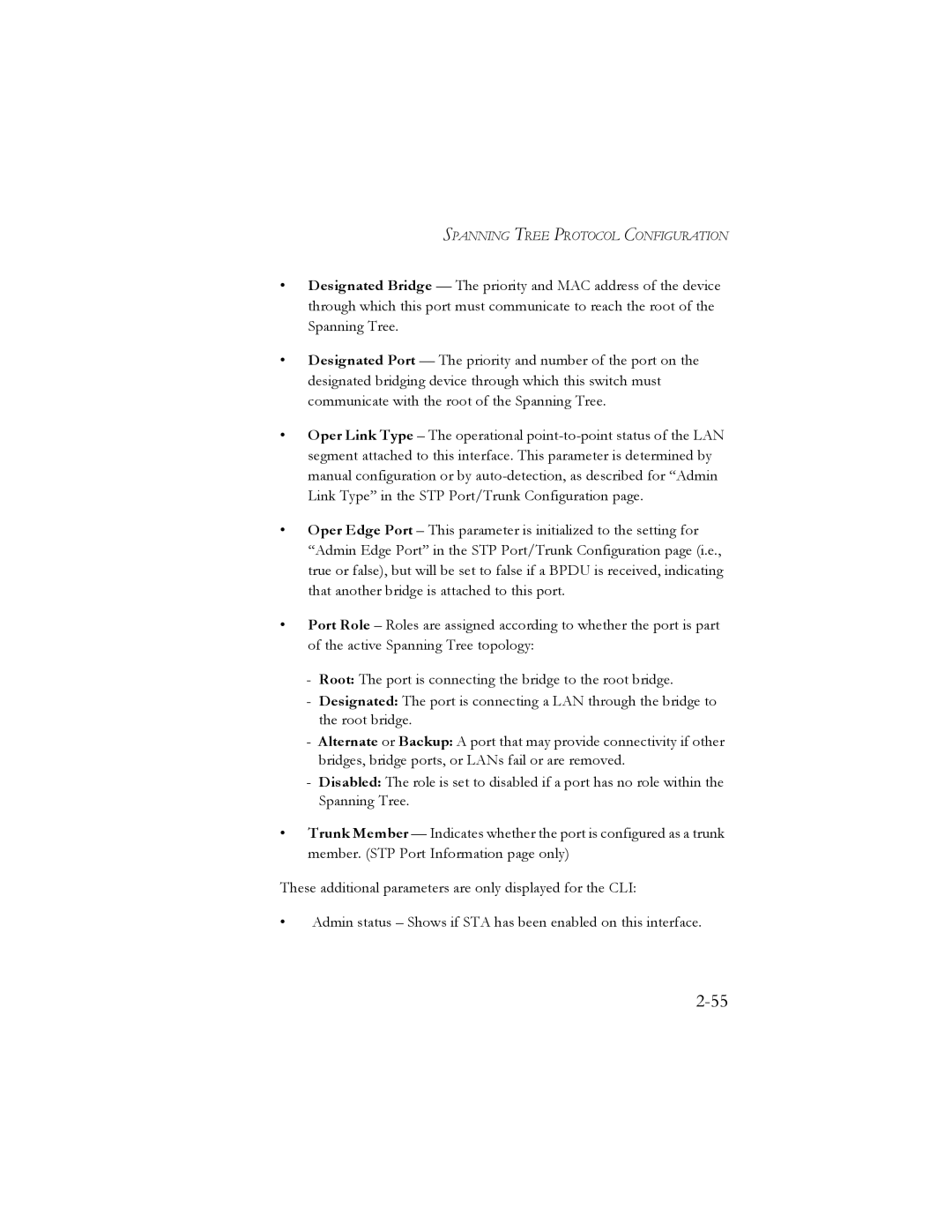SPANNING TREE PROTOCOL CONFIGURATION
•Designated Bridge — The priority and MAC address of the device through which this port must communicate to reach the root of the Spanning Tree.
•Designated Port — The priority and number of the port on the designated bridging device through which this switch must communicate with the root of the Spanning Tree.
•Oper Link Type – The operational
•Oper Edge Port – This parameter is initialized to the setting for “Admin Edge Port” in the STP Port/Trunk Configuration page (i.e., true or false), but will be set to false if a BPDU is received, indicating that another bridge is attached to this port.
•Port Role – Roles are assigned according to whether the port is part of the active Spanning Tree topology:
-Root: The port is connecting the bridge to the root bridge.
-Designated: The port is connecting a LAN through the bridge to the root bridge.
-Alternate or Backup: A port that may provide connectivity if other bridges, bridge ports, or LANs fail or are removed.
-Disabled: The role is set to disabled if a port has no role within the Spanning Tree.
•Trunk Member — Indicates whether the port is configured as a trunk member. (STP Port Information page only)
These additional parameters are only displayed for the CLI:
•Admin status – Shows if STA has been enabled on this interface.
